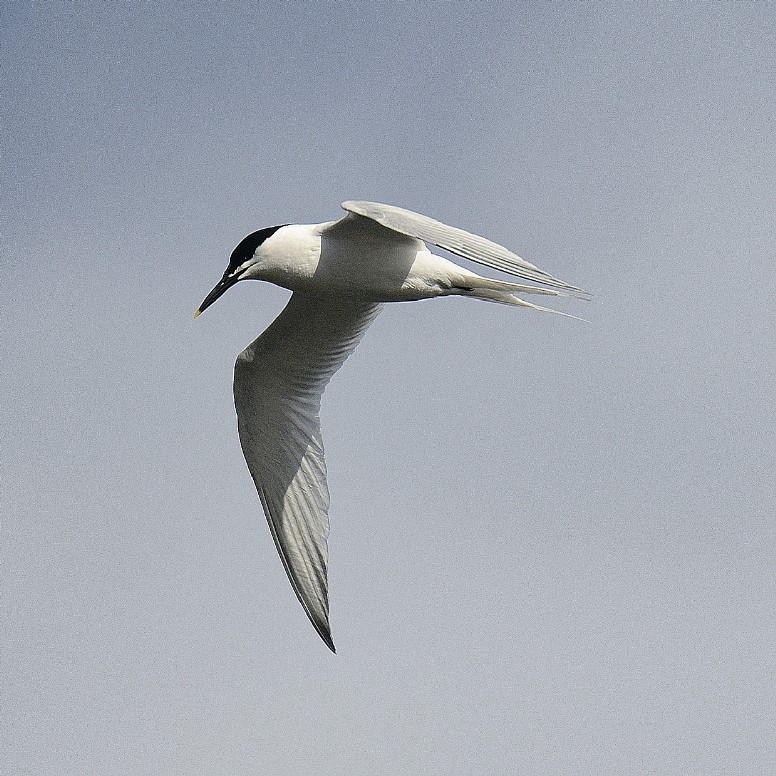Sandwich Tern

Terns are summer visitors and passage migrants to Arran. They are generally slender, lightly built birds with long, forked tails, narrow wings, long bills, and relatively short legs. Most species are pale grey above and white below, with a contrasting black cap to the head. The species that you are most likely to see feeding on the sea round the coast of Arran is the Sandwich Tern, particularly in the spring and autumn. Although the Sandwich Tern does not breed on Arran it is a regular passage migrant as it heads north from West Africa in the spring to breeding colonies in Europe making the return journey in the autumn.
Like most terns, Sandwich Terns feed almost entirely on small fish, squid and crustaceans, which it catches by plunging into the water from a height of five to seven metres. When foraging over shallow water, the Sandwich Tern may hover stationary over the water while it searches for prey, before ascending and rapidly diving to feed. It may also snatch its prey from the surface of the water, by flying low and skimming the waves. Watching Sandwich Terns feed is fascinating.
Sandwich Terns can easily be distinguished from other terns. It is the only tern with a long, thin black bill with a pale yellow tip. It is pale grey above and white below, with a contrasting black cap to the head with a black crest of spiky, slightly shaggy-looking feathers that extend from the back of the crown
The Sandwich Tern can be found in Europe, Africa, western Asia, and the southern Americas. It breeds seasonally on the coast of much of Europe east to the Caspian Sea, wintering from the Caspian, Black and Mediterranean Seas to the coasts of western and southern Africa also from the south Red Sea to north-west India and Sri Lanka. In the Americas, it breeds from Virginia to Texas, on the coasts of the Yucatan Peninsula, Lesser Antilles, Venezuela, French Guiana, eastern Brazil and Argentina. It winters from Texas, USA down to southern Argentina, in the Greater Antilles and from southern Mexico down to northern Chile.
They are long-lived birds. One ringed bird photographed in Kildonan had been ringed in Aberdeenshire nineteen years previously as a chick.
The only other tern that is regularly seen on Arran is the Arctic Tern. There is a small breeding colony on Pladda. These terns are slighter than Sandwich Terns and have red bills and legs. Other terns have been recorded but are uncommon. The Common Tern was last recorded in 2013, Little Tern in 2007, Black Tern in 1992 and Roseate Tern in 1984.